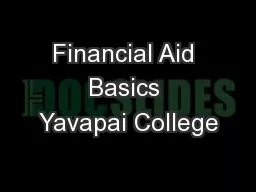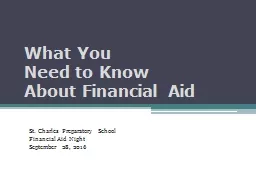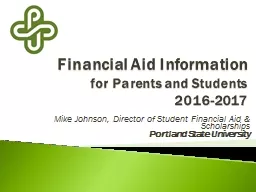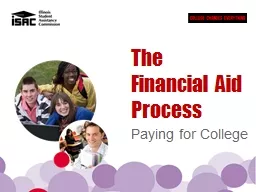PPT-College Funding and Financial Aid
Author : alexa-scheidler | Published Date : 2018-03-23
Workshop September 29 2016 Jane T Robbins Hope is not a plan Act with integrity and start early Oct 1 st FAFSA goes live Focus on Net Price when comparing award
Presentation Embed Code
Download Presentation
Download Presentation The PPT/PDF document "College Funding and Financial Aid" is the property of its rightful owner. Permission is granted to download and print the materials on this website for personal, non-commercial use only, and to display it on your personal computer provided you do not modify the materials and that you retain all copyright notices contained in the materials. By downloading content from our website, you accept the terms of this agreement.
College Funding and Financial Aid: Transcript
Download Rules Of Document
"College Funding and Financial Aid"The content belongs to its owner. You may download and print it for personal use, without modification, and keep all copyright notices. By downloading, you agree to these terms.
Related Documents














